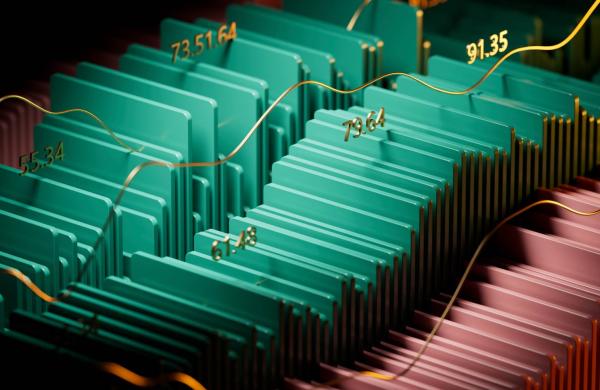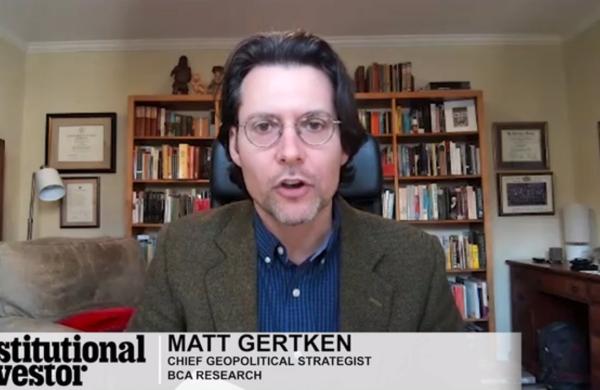The solution to any banking crisis lies with prompt and effective monetary policy. That, at least, is the conventional wisdom. No matter how great the preceding bubble, nor how severe the subsequent losses, central bankers have the tools to engineer a speedy recovery.
If so, it makes sense to buy bank stocks when they are beaten down. This has proved a profitable strategy during most banking crises. But when an economy enters a protracted period of deleveraging, the credit system becomes unresponsive to monetary stimulus. This is what happened in Japan after the collapse of its bubble economy in the early 1990s. Today the great danger is that the U.S. and other credit-splurged economies will follow Japan’s example and start paying off their debts.
The bullish case for buying U.S. financials is straightforward. With home prices down nearly 20 percent, according to the S&P/Case-Shiller home price index, the worst of the real estate decline is probably behind us. Although banks will inevitably announce further losses, they can at least make money from the fat spread between short- and long-term lending rates.
Recent experience supports this view. In the early 1990s the Greenspan Federal Reserve revived the profitability of the financial system with an upward-sloping yield curve. U.S. bank stocks had dipped sharply in late 1990, but subsequently enjoyed a strong V-shaped recovery, which was followed by several years of sustained gains. Investors who have been buying bank stocks this summer are presumably betting on a similar outcome. At their recent trough in July, U.S. bank stocks sold at 0.7 times book value, which is about as cheap as they were in the early 1990s.
Japan’s experience has been very different. After the stock market bubble burst in December 1989, Japanese bank stocks swooned for more than 13 years, a decline punctuated by several strong rallies. By mid-1991, for instance, Japanese financials were up nearly 50 percent from their low. This turned out to be the first of several “dead-cat bounces.” In October 1998 the Obuchi government announced a ¥60 trillion (then worth $496 billion) bailout for beleaguered banks. But even this wasn’t enough to permanently buoy their stocks, whose eventual trough occurred some five years later. By then Japanese banks had lost nearly 90 percent of their peak value.
Why was Japan’s financial crisis so severe and protracted? Some believe that the Bank of Japan kept interest rates too high for too long during the early years of the bust, pushing the economy into a deflationary contraction. Others maintain that the authorities failed to address the bad-loan problems in a timely fashion. Instead, an official policy of “forbearance” toward nonperforming loans allowed the cancer to spread. Japan’s mistake, according to this view, was to allow so-called “zombie companies” to continue to exist for so long.
These explanations are challenged in a new book by Richard Koo, Nomura Research Institute’s chief economist. In The Holy Grail of Macroeconomics: Lessons from Japan’s Great Recession, Koo argues that policy errors cannot satisfactorily explain the Japanese financial crisis.
Not all bank busts are the same. During a normal credit crisis — such as those the U.S. and various Nordic countries experienced in the early 1990s — credit demand remains strong. Under such circumstances, all that’s required to get the banking system back on its feet is a positively-sloping yield curve and fresh bank capital (either from private investors or the state) to make good any losses. For instance, U.S. banks had lost nearly half their value by early 1991 but quickly recovered and moved on to new highs.
Japan’s crisis was fundamentally different, according to Koo. Japanese banks failed to recover despite the sharp reduction in short-term interest rates after 1991 and the recapitalization of the financial system in 1998. Banks didn’t even respond positively when the Bank of Japan instigated its zero-interest-rate policy earlier this decade.
The reason, says Koo, lies with problems created by the collapse in asset values. During the 1980s, Japanese commercial property prices quadrupled. Banks assumed that real estate could never go down in value, a bad miscalculation. During the bust Japanese commercial land prices gave up all their bubble gains, eventually declining by 87 percent from the peak. The aggregate decline in Japanese asset values amounted to some ¥15,000 trillion. This loss, two thirds from falling real estate prices, was equivalent to the nation’s entire stock of financial assets, according to Koo.
Toward the end of the boom, heavily leveraged Japanese companies were borrowing at an annual rate equivalent to nearly 10 percent of GDP. The collapse in asset values led businesses to reassess their debt levels. By 1993 many were suffering from so-called “balance-sheet insecurity syndrome.” They started to pay down their debt and continued doing so even after interest rates had reached zero. Such actions make no sense in conventional economic theory. But Koo argues that during what he calls a balance-sheet recession, firms are more interested in minimizing their debt than maximizing profits.
Since 1989, the private sector has continuously deleveraged, and the ratio of debt to GDP currently stands below its 1980 level. Instead of borrowing to invest, Japanese companies have turned into savers. This newfound caution has proved to be a great drag on the economy, reinforcing the decline in asset values. When the private sector starts to deleverage in response to falling asset prices, monetary policy becomes ineffective.
Most observers argue that Japan’s recession was caused by the banking crisis. In fact, says Koo, Japanese banks were able and willing to lend during most of the first half of the 1990s. The problem was not the supply of credit but the lack of demand. The credit crunch appeared only in 1997 and was quickly addressed by the official recapitalization of the banking system the following year. Koo also denies that deflation contributed to Japan’s crisis. He points out that companies were paying down debt long before consumer prices started falling. Besides, Japan’s deflation was never severe, and nominal GDP continued to rise. For Koo the deflation followed rather than caused the private sector’s rising debt aversion.
It’s unlikely that the U.S. will suffer such severe balance-sheet problems as Japan. For a start, the inflation in real estate prices has been far less pronounced. Furthermore, outside of the private equity world, U.S. companies went into the current crisis much less leveraged. Nevertheless, the ratio of U.S. private sector debt to GDP climbed from 160 percent to more than 220 percent over the past decade. This level of indebtedness is somewhat above the Japanese peak of 1990. U.S. households may well respond to falling home prices and reduced credit availability by borrowing less and saving more. The deleveraging of America is no certainty, but neither should this prospect be ignored.
Edward Chancellor is the author of Devil Take the Hindmost and a senior member of GMO’s asset allocation team.





